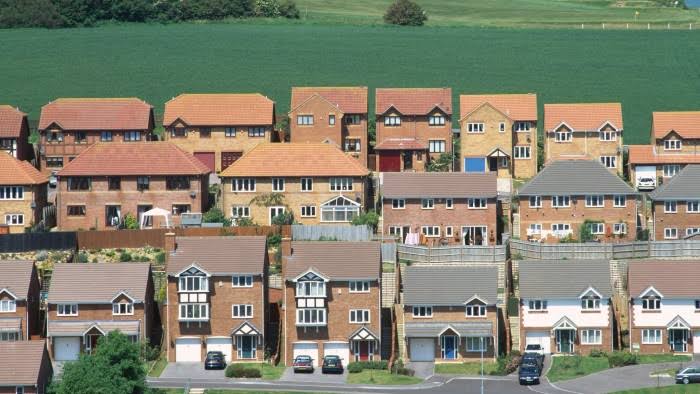
We, The Tenants: the UK’s Urban Planning Reform
It’s no secret. The UK has a terrible housing supply problem and far too few parties are pledging to do anything about it – no, they’re more focused on banning smoking in pub gardens and the outdoor areas of nightclubs (more on that later). With a new government perhaps, the UK finally has a new opportunity to put building more homes back on the policy table.
A few short weeks after the general election Deputy PM Angela Rayner promised that Labour would deliver 1.5m more homes over the next five years – an ambitious target considering that just 1.8m were built in England over the 10-year period from 2010 to 2020. Nevertheless, the plans to build on the green belt should councils not meet their housing targets means that this unused land that covers 13% of England will finally be put to good use.
Despite popular belief, the green belt is not actually green – rather, it is merely scrubland, privately owned and inaccessible to the public with little to no ecological or agricultural value. So why the name? The green belt is a piece of policy genius devised in the 1930s to stop cities merging together and to “protect” against sprawling urban expansion. I think now that it is safe to say that the green belt has not fulfilled its purpose: far from being an appetising “breath of fresh air” that the Campaign to Protect Rural England has it down to be, the belt has also failed in its mission to prevent“urban sprawl”, with the London commuter belt now widely understood to run from the Isle of Wight to Yorkshire. This is not to say that Britain is now entering into a concrete jungle that would have the grey-haired statesmen architects of the green belt turning in their graves. On the contrary, theOrdnance Survey says that just 1.5-2% of the UK is covered in buildings.
The think tank Centre for London argues that building on portions of the green belt is one of the immediate options available to us in an effort to tackle the housing crisis, pointing to poll results that indicate over half of Londoners agree. On the other side, however, CRPE Oxfordshire Director Helen Marshall said that research commissioned ten years ago showed that 70% of Oxfordshire wanted the green belt to remain undeveloped, and that this figure has risen to over 80% in the ten years since.
During this ten year period, however, the number of people in their 50s and aged 65+ residing in Oxfordshire has grown by 27% and 25% respectively in that 10-year period, which provides a useful insight into a political minefield that I have been writing on for over three years now.
The policy battle for urban planning and development has been narrowed down into two binaries: NIMBY (Not-in-my-backyard), and YIMBY (Yes-in-my-backyard). These two camps do what they say on the tin, the NIMBYs object to and campaign against further development, whilst the YIMBYs believe the rapid construction of homes to be a necessary guard against rising house prices and more generations of young people unable to get on the ladder.
YIMBYism was, for so long, considered to be an attribute of the right – the Adam Smith Institute and Centre for Policy Studies being some of the loudest voices in support of planning liberation. Yet, in recent years, it has become more associated with the millennial and Gen Z voters who have been priced out of the market – whichever foot they kick the political ball with.
It’s not a mistake to reduce the YIMBY v NIMBY debate into age categories, especially since outright home ownership has become one of the main factors driving the older generations into the Conservative party’s arms. Labour has capitalised on this, of course, with Starmer making “backing the builders, not the blockers” a focal point of his economic plan. As a firm ally of the YIMBY Alliance I can tell you that young people like me are definitely more inclined to be pro-construction, precisely because, unlike older generations, we don’t stand to lose anything. Older, home-owning citizens fear that their properties will be brought down in value by the construction of new homes in their local area, and this area “tarnished” by more noise, children, use of public transport – disturbing their perfect tranquil lives by, well, wanting to live somewhere. YIMBYs and NIMBYs, builders and blockers, the battle for the streets is a back-and-forth game of grenade tennis which will either result in an explosion of young people out on the streets or a gaggle of angry older people. I know which outcome I’d prefer.
Older, home-owning citizens fear that their properties will be brought down in value by the construction of new homes in their local area, and this area “tarnished” by more noise, children, use of public transport – disturbing their perfect tranquil lives by, well, wanting to live somewhere.
Development on unused land such as the green belt allowssuburbs to expand and provide much needed family housing for these areas. This is especially true for London’s under-occupied suburban districts. The Supurbia study, conducted by HTA Design and the Greater London Authority, intends to do just that – identify how the urban intensification of suburban London will not only lead to greater housing supply, but “promote economic activity, improve local service provision, reduce congestion, improve the quality of life, the choices available and sustainability in the suburbs of the outer Boroughs”. The project highlights a key part of a YIMBY victory, to “tackle the resistance to change that is inherent in suburban areas with an alluring portrayal of future possibilities”. Perhaps more importantly is that the study intends to challenge the resistance to change by exploring different ownership and governance models that would enable the collective benefit of not just an increased housing supply, but local transport, public services, as well as the possibility of shared car and energy usage – meaning a lot less of both! As such the study paints a picture of a brighter, fuller, and perhaps greener, future than we might have imagined arising out of increased development and construction.
Several ideas spring to mind, but my personal favourite? Street votes. This system of local governance allows residents of a street or local area to vote to for planning permission to be given, and development to take place. This may also be boiled down to a democratic solution to the battle between NIMBYs and YIMBYs, streets may simply elect whether or not construction and development can take place. This revolutionary idea can help swing the balance in favour of a greater housing supply, empowering communities to decide for themselves whether they reside in the NIMBY or YIMBY camp. The YIMBY Alliance says the “idea is that residents on individual streets could jointly put forward a plan to enable extensions and new homes on their street. This community-led approach will deliver more homes on previously developed land, in places with existing infrastructure”.
Street votes, however, only solve part of the problem: allowing the intensification of existing development in the suburbs. In order to achieve a full pro-development victory more homes should be built on unused land such as the green belt, and not just intensifying what is already there. More homes means greater density, which not only reduces residents’ requirement to travel as far and as often, with greater proximity to local businesses and services, then further development leads to a future of prosperity for local business owners, residents, and the Exchequer via taxation.
Compulsory Purchasing Orders (CPOs) can complementresidential development by allowing the government to build in the public interest. This legal tool will ensure that green belt land, shares of which could be distributed to governmental and resident shareholders, is developed in the public interest, and devoted to the provision of essential services to densely populated suburbs – especially around London. The Adam Smith Institute claim that CPOs could help deliver 3.8m houses over a 15-year period, as well as raise £938bn for the Exchequer.
It isn’t enough, however, for ideas, policy proposals, and mere thoughts to be thrown around the political chessboard. No, pieces must be moved, and actions must be taken to ensure that future generations are not barred from the property ladder because of hesitancy, poor planning, and older generations that refuse to see a developed, greener, more inhabitable Britain.
We, the tenants, and future homeowners of the UK, must ensure that this ideal turns into a reality.
Archie Rankin is a Fellow at the Sixteenth Council



